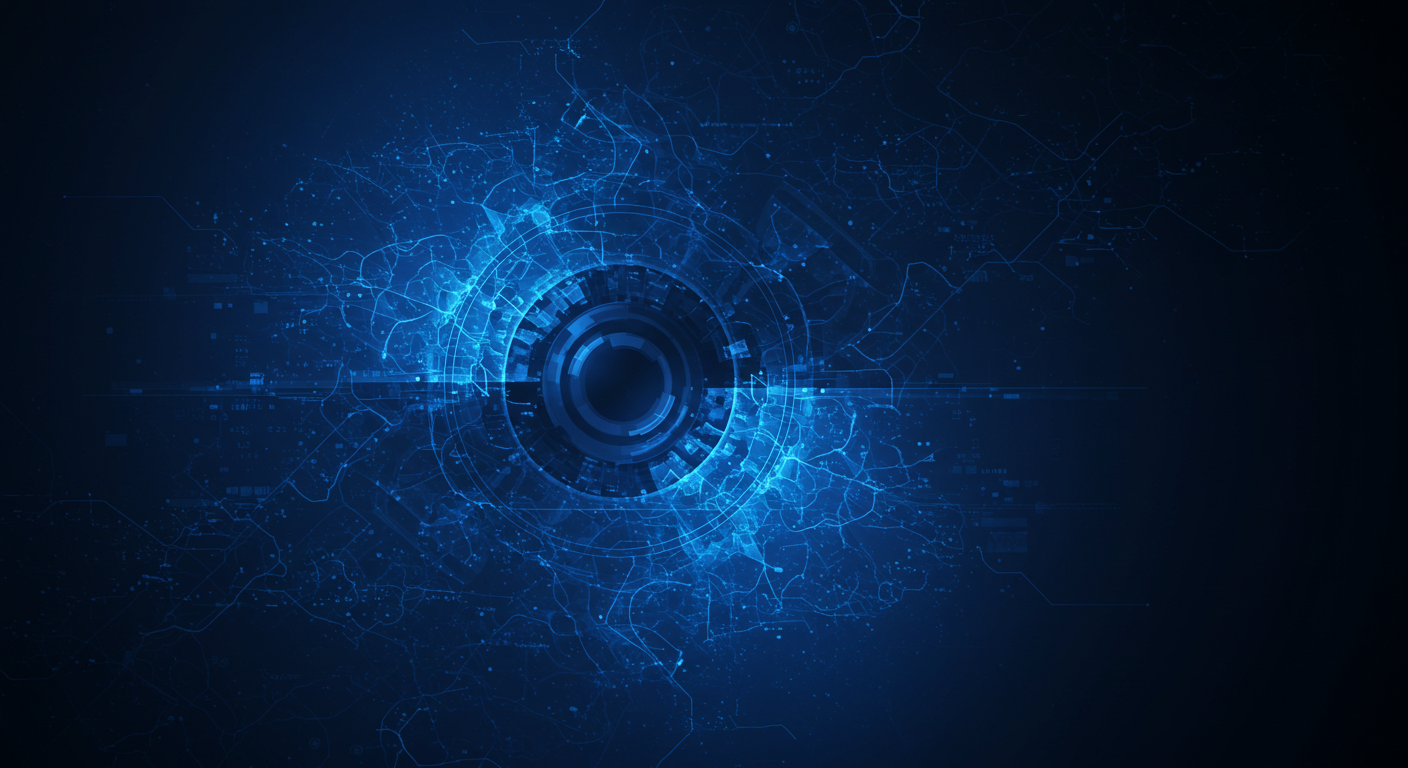2025年7月末から8月初旬にかけて、製造業におけるAI(人工知能)技術の活用が新たな段階に入りました。世界中から発信される最新のニュースと実用例を分析すると、製造業におけるAIの応用は単なる自動化を超えて、真の「認知的製造」の時代に突入していることが明らかになります。
ヒューマノイドロボットの本格的な製造業進出
欧州発の産業用ヒューマノイド革命
2025年6月、欧州の製造業界に衝撃が走りました。ドイツのNEURA Roboticsが第3世代の4NE1認知ヒューマノイドを発表し、スイスのHexagonがAEON産業用ヒューマノイドを、フランスのWandercraftがルノーグループと戦略的パートナーシップを結んでCalvinを発表したのです。
これらのロボットは単純な自動化ツールではありません。センサー「スキン」とAI知覚システムを通じて人間と安全に協働する「認知的」ロボットであり、反復作業や重労働から作業者を解放します。特に製造業と物流業における深刻な労働力不足問題への解決策として期待されています。
FoxconnとNVIDIAの歴史的パートナーシップ
最も注目すべきは、台湾のFoxconnと米国のNVIDIAによる革新的な取り組みです。両社は2026年第1四半期から、テキサス州ヒューストンの新工場でAIサーバー生産ラインにヒューマノイドロボットを配備することを発表しました。
この計画の画期的な側面は、NVIDIAの製品が初めてヒューマノイドロボットの支援を受けて製造されることです。ロボットは組み立て作業、ケーブル挿入、部品のピック&プレースなど、従来の電子機器製造プロセスを根本的に変える可能性を持つ精密作業を担当します。
AI予知保全システムの実用化加速
故障予測から在庫管理最適化まで
製造業におけるAI活用の最も成熟した分野の一つが予知保全であり、2025年の最新トレンドでは、単なる機械故障予測を超えて、サプライチェーン全体の最適化にAIが活用されていることが示されています。
AIアルゴリズムは機械データをリアルタイムで分析し、故障を事前に予測するだけでなく、需要予測と連動して部品調達を自動化します。これにより、従来の「ジャスト・イン・タイム」在庫から「ジャスト・イン・タイム」MRO(保守・修理・運用)在庫管理への転換が可能となり、在庫コストの大幅削減と計画外ダウンタイムの最小化を同時に実現します。
実際の成功事例として、化学メーカーのHexpolは、隣接する州の工場間でのリードタイム回避のため、複数工場での部品共有システムを成功裏に構築し、在庫レベルをチェックして必要な部品を瞬時に特定・予約するシステムを導入しています。
AI品質管理システムの革新
人間を上回る検査精度
品質管理の分野では、AI搭載のコンピュータビジョンシステムが製造業を革命的に変化させています。最新のAI品質管理システムは、ミリ秒単位で製品検査を実行し、人間の検査員が見逃すような微細な欠陥も確実に検出します。
Rockwell Automationの調査によると、製造業者の95%がAIに投資しており、品質管理が2年連続で最優先の応用分野となっています。これは、AI品質管理システムが単純な検査自動化を超えて、生産速度と品質の同時向上を実証しているためです。
従来の生産ラインでは品質検査がボトルネックとなることが多かったのですが、AI搭載システムではすべての製品を高精度で検査しながら生産速度を向上させることができます。これにより、生産作業者は根本原因分析やプロセス改善といった、より高度なタスクに集中できるようになります。
デジタルツインとAIの統合活用
バーチャルファクトリーによる最適化
デジタルツイン技術とAIの統合により、製造業において「バーチャルファクトリー」の概念が現実のものとなりました。機械やシステムの詳細な仮想レプリカを作成することで、物理的な介入なしに性能シミュレーション、故障予測、プロセス最適化が可能になっています。
特に新製品開発においては、デジタルツインがAIモデルの訓練環境として活用され、実世界への展開前に様々なシナリオでの検証が可能となります。これにより、開発コストと市場投入時間の短縮を同時に実現しています。
産業IoT(IIoT)とAIの融合
スマートファクトリーインフラの構築
産業IoT(IIoT)とAIの融合は、真のスマートファクトリー実現の基盤となっています。エンタープライズIoTは2028年までに市場収入の72%を占めると予測されており、AI技術との統合がその成長を牽引しています。
エッジコンピューティングの進歩により、データ生成源により近い場所でのデータ処理が可能となり、低遅延でのリアルタイム意思決定が実現されています。これにより、クラウド接続に依存しない自律的な製造システムの構築が現実のものとなりました。
投資トレンドと市場成長
活発な資金調達と市場拡大
2025年前半の投資トレンドは、製造業向けロボティクス分野への投資増加を示しています。注目すべき資金調達には、産業インフラ検査ロボットのGecko Roboticsが1億2500万ドルを調達し、企業価値12億5000万ドルのユニコーン企業となったことが含まれます。また、自律配送ロボットのCoco RoboticsとAI搭載ロボット養蜂システムのBeewiseがそれぞれ8000万ドルと5000万ドルを調達しました。
全体として、市場は新規産業用ロボット設置で165億ドルに達し、世界で428万台以上のロボットが稼働しています。特にモバイルロボティクス市場は2024年に55億ドルを超え、2030年まで年率20%以上の成長を続けると予測されています。
持続可能性への貢献
グリーン製造の実現
AI技術は製造業の持続可能性向上にも大きく貢献しています。AI駆動のエネルギー管理システムがエネルギー消費パターンをリアルタイムで分析し、より効率的なエネルギー使用方法を提案することで、生産レベルを維持しながらエネルギー使用量を削減しています。
予測分析と最適化された生産計画により、材料廃棄物を最小化し、過剰生産を防止し、カーボンフットプリントの精密な監視を可能にしています。
人材開発と労働力問題への対処
技術によるスキルギャップの解消
AI技術は、製造業が直面する労働力不足とスキルギャップの問題に革新的な解決策を提供しています。協働ロボット(コボット)により人間との安全な作業環境が構築され、AIサポートシステムにより2年の新人が30年のベテランと同等の判断力を獲得できるようになりました。
デジタル拡張技術とリアルタイムデータ洞察の活用により、作業者のスキル強化と意思決定能力の向上が可能となり、少数精鋭の作業者による効率的な工場運営が実現されています。
自律学習工作機械による自律的生産の実現
ドイツのDatron AGなど、EMOハノーバー2025の出展企業は、機械が学習した知識を活用して生産プロセスを適応させる自律学習工作機械を実現しています。目標は、Datronフライス盤を部品要件と環境条件に自動的に適応する適応的生産セルに発展させることです。
これにより、セットアップ時間と加工時間が削減されるだけでなく、プロセス安定性が向上し、自律的生産への決定的な一歩となります。AI搭載のCNC生産では、セットアップ時間を最大60%削減し、不良品を大幅に減少させ、工具寿命を延長しながらプロセス信頼性を向上させることができます。
今後の展望
カスタマイズAIの時代
製造業向けのカスタマイズAIソリューションは、2025年後半から汎用ソリューションを上回る性能を発揮すると予測されています。製造業固有のデータで訓練されたAIシステムは、個々の企業プロセスに対するより深い理解を提供し、サプライチェーンリスク評価から予知保全、設計最適化まで、大幅に高いROIを提供します。
また、サービタイゼーションモデルの拡大により、製品販売後のプロダクトライフサイクル全体でのサービス提供が重要となり、AIベースの製品使用データ分析が新たな収益源創出の鍵となります。
まとめ
2025年7月末から8月初旬の1週間だけでも、製造業AI分野では一連の革新的技術発表と実用例が示されました。ヒューマノイドロボットの本格導入から、高度なAI予知保全システム、品質管理の自動化、デジタルツインとの統合活用まで、これらの技術は製造業の生産性、品質向上、持続可能性に大きく貢献することが期待されています。
重要なことは、これらの技術が単なる未来のビジョンではなく、今日実装されている現実のソリューションであることです。製造企業にとって、AI技術の実装は競争力維持と将来の成長に不可欠な要素となっています。
出典リスト
- Amiko Consulting – “製造業におけるAI革命2025:2025年6月末~7月初旬の最新トレンドレポート”
https://amiko.consulting/the-manufacturing-ai-revolution-in-2025-latest-trends-report-for-the-end-of-june-and-beginning-of-july-2025-week-1-july-2025-the-future-of-manufacturing-as-deciphered-from-global-ai-news/?lang=en - Metrology News – “EMOハノーバー2025でAI搭載機械が工場フロアを再定義”
https://metrology.news/ai-powered-machines-to-redefine-the-factory-floor-at-emo-hannover-2025/ - IIoT World – “産業用AIの台頭:2025年に注目すべき自動化トレンド”
https://www.iiot-world.com/artificial-intelligence-ml/artificial-intelligence/industrial-ai-trends-2025/ - The White House – “アメリカのAIアクションプラン 2025年7月”
https://www.whitehouse.gov/wp-content/uploads/2025/07/Americas-AI-Action-Plan.pdf - Rockwell Automation – “2025年の産業自動化における8つの主要トレンド”
https://www.rockwellautomation.com/en-us/company/news/the-journal/8-key-industrial-automation-trends-in-2025.html - TS2 Tech – “産業用ロボティクス&オートメーションの突破口 – 2025年6-7月”
https://ts2.tech/en/industrial-robotics-automation-breakthroughs-june-july-2025/ - The Robot Report – “2025年7月のロボティクス開発トップ10”
https://www.therobotreport.com/top-10-robotics-developments-of-july-2025/ - McKinsey & Company – “2025年技術トレンド展望”
https://www.mckinsey.com/capabilities/mckinsey-digital/our-insights/the-top-trends-in-tech


